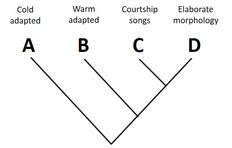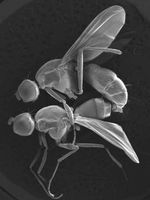|
The establishment of reproductive isolation is a critical component of species formation because it is required for the initial divergence and for the subsequent maintenance of different species. For instance, if species A and B are adapted to different environments, any hybrids that arise would have reduced fitness in either environments because they might display maladaptive intermediate phenotypes. Similarly, if species C and D have evolved divergent mating preferences, hybrid fitness would also be compromised by the inability of finding a suitable mate. Both of these scenarios underscore the link between divergent adaptation with ecological and sexual isolation.
The above is also valid when studying divergent populations in widespread species. Populations that span across large geographical ranges can become differentiated simply through genetic drift and accumulation of random variation over time. However, isolation between populations can evolve as a by-product of divergent ecological and/or sexual selection. We are specifically interested in the latter. Using particularly widespread sepsid flies, we find that female mating preferences might be driving differentiation in male reproductive traits across Europe, America and Asia. When studied in a geographical framework, gene-trees and haplotype networks can have great explanatory power so we intend to take a phylogeographic approach to test predictions about the underlying genetic structure in this widespread species and the role of sexual selection in mediating gene flow and isolation. |
Relevant publication
Puniamoorthy, N. 2014. Behavioural barriers to reproduction may evolve faster than sexual morphology among populations of a dung fly (Sepsidae). Animal Behaviour 98: 139-148. |
Contact us |
|


